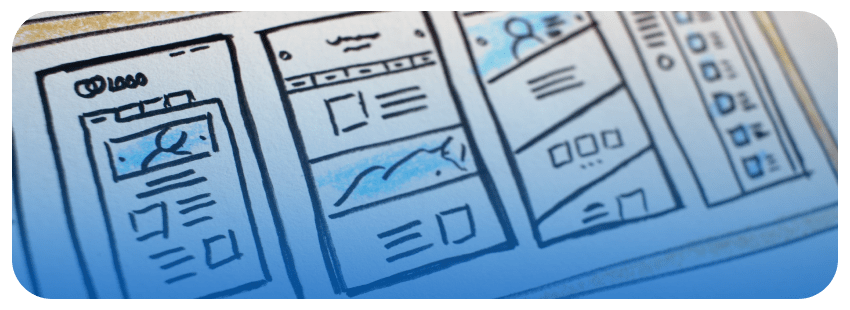Website design can make or break a business. By following the right website design tips, you’ll be able to make your site look great while making sure visitors take the actions you want. A well-designed website will get you more traffic and more conversions.
Getting your website well-designed isn’t as easy as it might seem. Great design involves a carefully planned approach. There are all kinds of tips and best practices to consider around graphic design for your website.
You’ve got to think about the entire visitor journey and experience, not just what the website looks like. This is essential for better conversion rates.
We’ve put together 21 essential website design tips to help your website stand out and turn more visitors into sales.
- Start With Clear, Cohesive Branding
- Use High-Quality Images
- Add Video to Your Web Pages
- Keep Your Copy Short and Compelling
- Embrace Blank Space
- Add Movement and Animation
- Make it Clear What You’re Selling
- Consider Using Maximalism
- Keep Your Website Current
- Don’t Use Stock Photos That Look Like Stock Photos
- Display the Value Proposition in Your Menus
- Make it About the User
- Make Your Website Skimmable
- Use Well-Known Conventions
- Use Great Typography
- Encourage Micro-Actions
- Make CTAs Clear
- Consider Color Psychology
- Information and Visual Hierarchy
- Make Landing Pages Simple
- Incorporate Social Proof Into Your Design
1. Start With Clear, Cohesive Branding
The foundation of any great web design lies in branding. Before you even start working on your website design, you need to get your branding sorted out. Having clear, quality visual branding may seem like one of the most obvious website design tips, but it’s something that many people don’t put enough focus on.
Your visual branding will be used all across your website, social media, and anywhere else that your brand is present. It’s what your entire website design will be based around, and it will influence every button, image, color choice, and so on.
Visual branding includes your logo, color palette, font, and it could include a mood board that represents your brand. You can use a logo maker as an easy starting point, and use an AI tool like ColorMind to help you with generating a color palette for your website.
This branding needs to be coherent and offer a clear aesthetic that will follow continue across the site. If you’re not 100% happy with your visual branding, get this sorted out before moving on to the rest of your website design.

2. Use High-Quality Images
Your web design is only as good as the images you use. You could have beautiful branding and well-thought-out UX design, but your entire website experience will be affected if your images are low-quality.
Hire a professional photographer to take high-quality headshots, and use unique images wherever possible. If the pictures aren’t of a high enough quality, you can always opt for stock images. However, be very careful here. Don’t just grab images from a free stock photo site. Make sure your stock images are unique and fit in with your branding.
Even photographs should be cohesive with your visual brand color palette and general aesthetic.
You don’t need a lot of photos on a website, but when you use them, make sure they’re high quality. These are some of the most powerful visual aspects on any site, so you’ve got to make sure they’re making an impact.
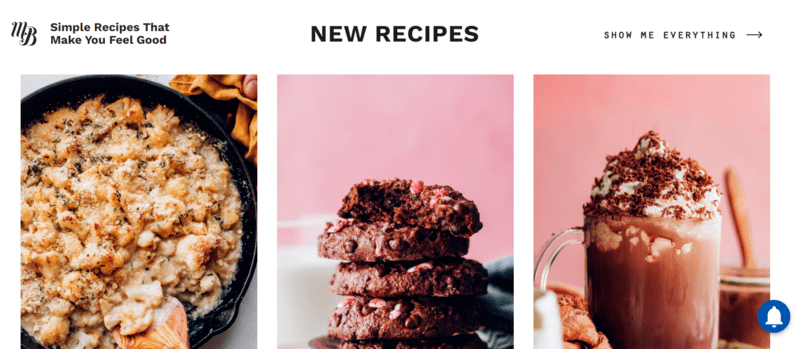
3. Add Video to Your Web Pages
Just like images are important, so is video. Video makes an enormous impact online, and using video in web design is more popular now than ever before.
Video is one of the most engaging visual elements, and you can use it to help website design in many different ways. This could be through a customer testimonial, a product demonstration, an introduction to your business, and more. These videos offer the visitor more information in an easily digestible format.
By including videos, you also add movement to your website. Movement helps to make the overall design stand out. You only need one or two high-quality videos spread out across your website to make an impact.

4. Keep Your Copy Short and Compelling
While copywriting is separate from graphic design, it still takes up space on a website and adds to the website’s visual appeal. When you create copy for your website, don’t just think about what it’s saying. You should also think about how the copy will look in your final design.
The main idea is that your copy should be short and to the point. When visitors go onto your website, they should be able to understand exactly what you’re trying to say. They shouldn’t have to stop and spend time digesting and reading content. Basically, your copy and your visuals need to blend together to form a cohesive design.
For example, if you have four sections underneath each other on your homepage, they should each consist of the same number of lines of copy. If one section is double the length, it will affect the visual experience of the website.
So, think about how your web copy will look, and not just what it will say. This is one of those web design tips that is often overlooked.
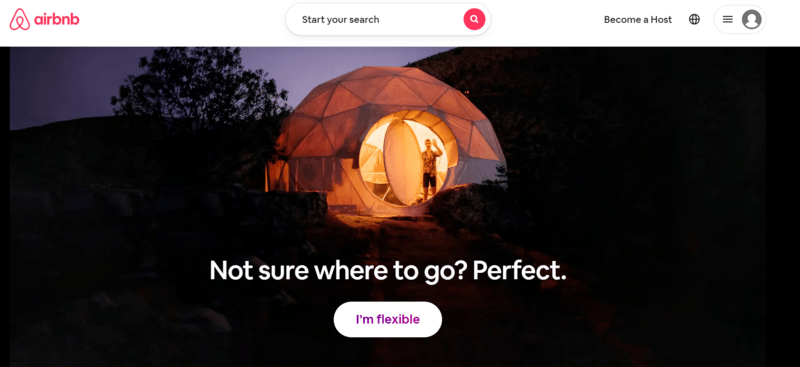
5. Embrace Blank Space
Any good web designer will know that empty white space is just as important as graphics. Having a good balance of blank space on your website is incredibly important for the user experience. This makes your website easier to navigate, and it helps your important visual elements to stand out.
There’s really no need to overcomplicate your website and add too many visual elements. Blank space is a vital design characteristic, and you need to use it to your full advantage.
Just take a look at Google – they’re the ultimate example of using blank space to completely enhance their website.
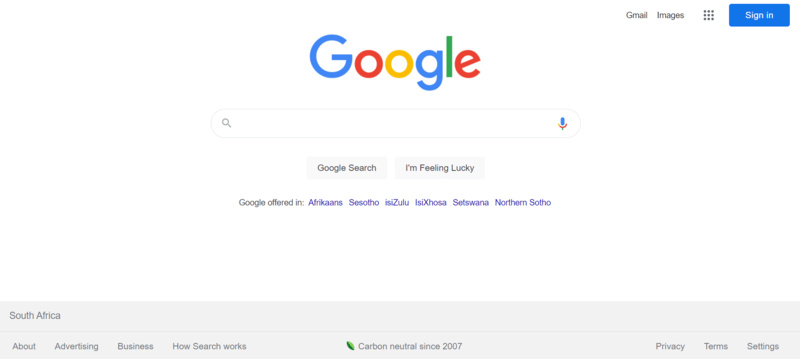
6. Add Movement and Animation
One of the best website design tips is to keep your website alive. It’s not like a book where the page remains static. Users want to engage with your website and they want the experience to be exciting.
If you’re not adding in small animation elements and movements, then it’s time to. This should be subtle enough for it not to be distracting, but there should also be enough movement to keep your site alive.
So, one of our top website design tips would be to think about movement and animation when putting visuals in place. Simple movements on a website make a huge difference to the user experience, and they can really make the different design elements stand out. And so many websites today are still static. By adding in some movement, your website will stand out significantly.
7. Make it Clear What You’re Selling
Your website needs to serve a very specific purpose. If your site is confusing in any way, your visitors will quickly leave.
Part of the job of the web designer is to clearly illustrate what the website is about without having to use words. Website visuals should tell a story just like web copy does, to make the visitors’ experience a lot more clear.
Don’t confuse the website design by using visuals that don’t match the purpose of your business. By using photos that are unrelated to what your business does, you could leave your visitors confused, and ruin their experience on your site.
So, don’t just make your website design look good, it also needs to make sense. Clearly connect the copy with the imagery to create a perfectly connected website experience.

8. Consider Using Maximalism
Minimalism is a fantastic technique when it comes to web design tips, but maximalism can also work really well depending on your business. Maximalism is all about going big, using bold colors and aggressive imagery. It doesn’t work for everyone, but if this design style matches your business, it could have a great impact.
Maximalism helps you stand out and be remembered. Sometimes it’s a good idea to move away from the typical web design tips that focus on minimalism and take a bolder approach. If done properly, it could pay off.
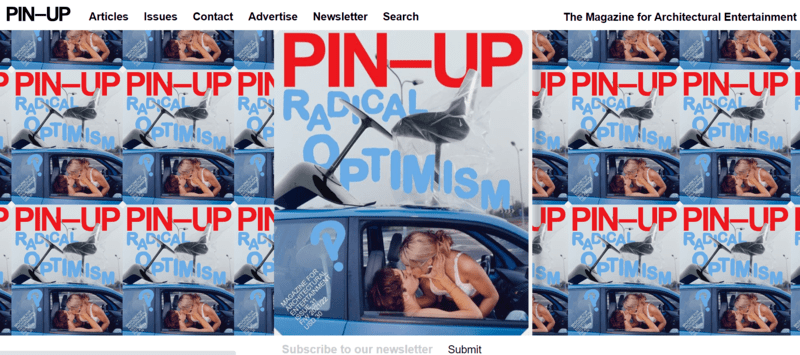
9. Keep Your Website Current
This goes without saying, but you have to constantly keep your website up to date. You could have a beautiful website that follows all the best web design tips, but this could quickly go out of style. Things move quickly online, and so you need to make sure your website is keeping up.
Remember, your website is a representation of your business. If your web design is out of date, then this will reflect your business.
Make updating your website a regular habit. Stay on top of design trends, see what your competitors are doing, and ensure your website is at the same standard.

10. Don’t Use Stock Photos That Look Like Stock Photos
Stock photos play an important role in most website designs. Like we mentioned earlier, one of the most important design tips is to use high-quality original photos. Always try to hire a photographer to take unique photos for you. However, this isn’t always possible.
It’s ok to use stock photos, as long they are premium stock photos that look original. You can tell straight away when a business uses cookie-cutter stock images, and this won’t do your site any favors. Spend time looking for the right stock images, and keep them in line with your branding and visual identity.
And it’s also always best to pay for premium stock images. Yes, these cost you, but they look better and are far more original. The cost of stock photos is generally very affordable, so it’s worth getting the best quality you can.
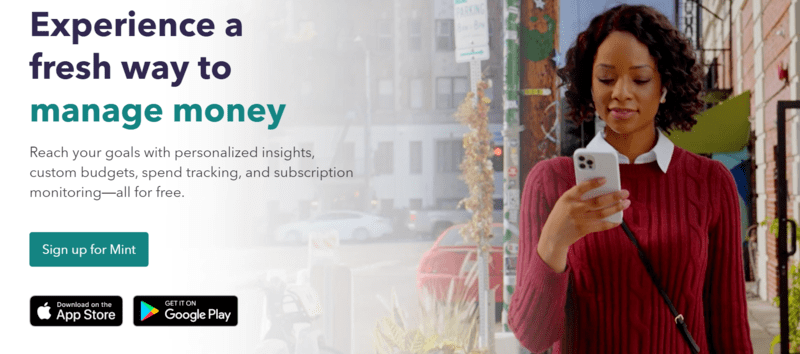
11. Display the Value Proposition in Your Menus
A good way to stand out in your niche is to customize the navigation tiles and menus. This may seem like a very small web design tip, but it can make a big difference between static and dynamic websites.
For example, you could say “learn” instead of “classes”. This shows the value that the classes provide, and it helps your website to stand out from every other one that offers “classes”. This is a small web design tip, but it could help you get a lot more conversions and stand out from your competitors.
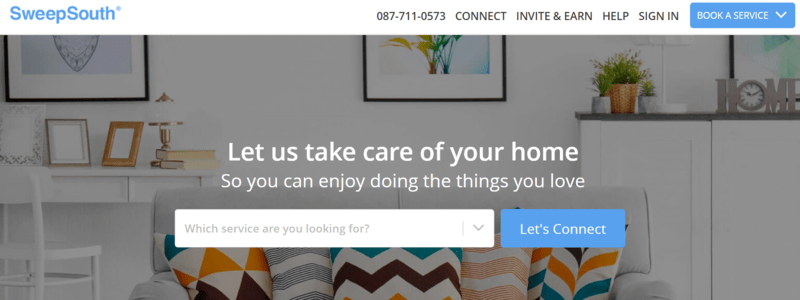
12. Make it About the User
Another one of the most important web design tips is to always remember the user. Don’t make your website about you – design it with the user in mind. Every section of your website should communicate the value that your users are looking for.
Understand who you serve, what problems these people are facing, and what they want to find out. This means you shouldn’t just think about graphic web design that looks good – it’s also got to speak to your users. Always use the kind of imagery and visuals that these users want to see.
And of course, ensure your design is suitable for mobile. Most of your web traffic will come from mobile devices, so keeping your design mobile-friendly is essential. Always ensure the mobile version of your site adds value to all users with smaller screen sizes.
13. Make Your Website Skimmable
Most of your website visitors will want to quickly scroll through your website. The information you display should be easy to read in a skimmable format. The visuals you use will play a major role in this.
Of course, the headlines need to be clear and the copy needs to be concise, but the web design should compliment this. The images, colors, and any visual elements should all tell the story of the website, and they should be very easy to understand at a glimpse.
If the imagery and media are too dense and confusing, people will quickly leave the website. So, keep images simple, clearly relate them to the text, and position them in a format that is easy to skim and understand.
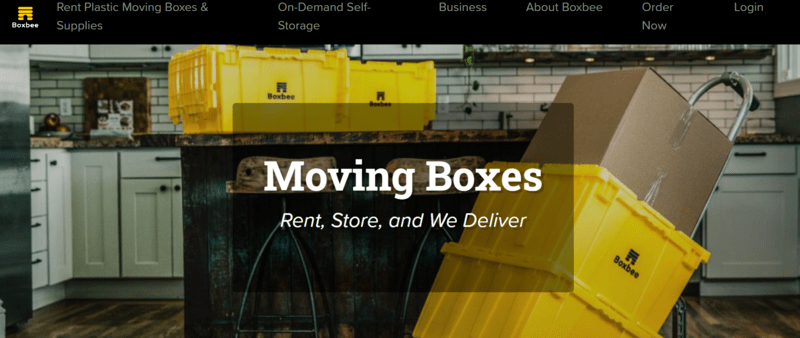
14. Use Well-Known Conventions
There’s a reason that most websites follow the same general design format. This is because it works.
How often do you find navigation at the top, sidebars on the right, and footers at the bottom? A good website doesn’t keep the visitor thinking. Instead, they know intuitively how to navigate the site. This is because well-known conventions are used.
Thinking outside the box is good for web design, but you should also stick to the conventions that you know work. So if you want to get your visitors to take the actions you’re after, then follow website conventions that are proven to work. Your site visitors will be more comfortable, and you will be able to get them to perform the actions that you want.

15. Use Great Typography
Typography plays a major role in website design. One of the most important web design tips is to carefully choose your typography. This should be decided in your visual branding before you create a website, However, you will soon realize that websites include a variety of different types of fonts.
The different typography options need to work perfectly with each other. Some fonts complement each other and some don’t, so it’s important to know which ones work. And when you choose your typography, make sure that this remains consistent across your entire website.

16. Encourage Micro-Actions
When thinking about responsive web design, you’ve got to put micro-actions first. The idea behind this is that visitors to your website will take many small actions, and not one big action. Graphic web designers need to understand this concept and ensure all visual elements encourage these micro-actions.
For example, let’s say a user lands on a homepage. The next micro action might be to get them to scroll further past the fold. Then, the next micro action could get them to click on a link that helps them navigate to a new part of the website. These actions continue into a long stream of possible options, and they need to be assisted by visual prompts.
When designing a website, make sure that you understand the micro-actions you want the user to take, and map out this journey for them through visuals. If you don’t think about this when putting together your responsive web design plan, the website experience could be confusing. It also might not help you achieve the right results.
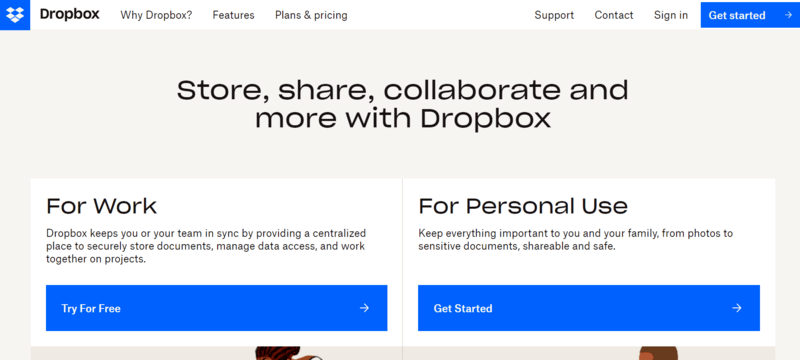
17. Make CTAs Clear
One of the most important elements on any website page is the Call To Action (CTA). There are two things that go into a call to action. These are what the CTA says, and how the CTA looks.
Ultimately, your goal with a CTA is to grab visitors’ attention and get visitors to click on it. As the name suggests, this button calls to action something that you want the visitor to do. This could be to book a demo, to check your prices, to get in touch, or anything else. It’s a vital part of responsive design on your site.
We won’t get into the copywriting side of a good CTA (you can learn more about this here), but we will talk about the design elements of these buttons. CTAs need to stand out, they need to be very clearly visible, and they need to be simple. You want to entice the user to click on these buttons, so make them pop out.
In terms of web design, a good CTA should be a solid, bold color that stands out from the background. It should be small enough to remain simple while being large enough to attract attention. The user should also instantly understand what message it’s offering.
At the end of the day, the whole point of your website and web design is to attract visitors and get them to take an action. If your CTAs aren’t effective, then your website isn’t going to achieve good conversion rates.
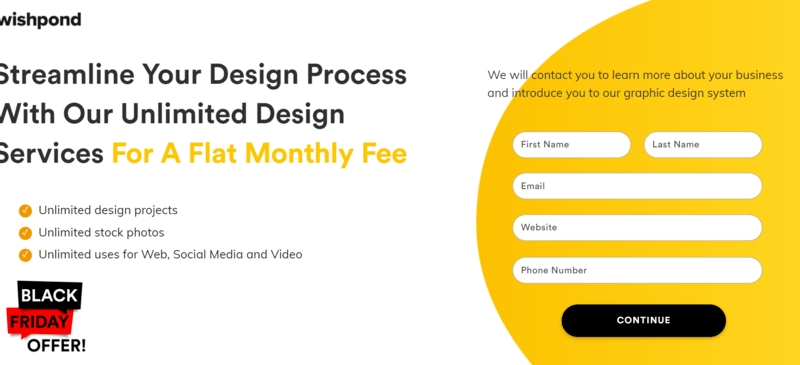
18. Consider Color Psychology
Colors don’t just look pretty, they also have deeper emotional meanings. Ever heard of color psychology? This is the idea that different colors portray different feelings and emotions. This means different colors can result in different human behavior. For good web design, you’ve got to make sure your brand and website are using the right color palette.
A web designer should consider color psychology when they put together a website. This could make a big difference to how your visitors perceive your site, your brand, and what kinds of actions they will take.
For example, blue tones are often associated with feelings of relaxation, while red tones are more stimulating and exciting. Both of these color associations are positive but in different ways. Think about which one would best suit your brand and help users achieve the actions you want them to take. This can be brought into every element of your website design.
Of course, color psychology should be considered earlier on when your branding and visual identity are created. However, when you design new landing pages or add extra elements to your website (such as popups or new buttons), it’s important to think about color psychology and how this might affect your users.
19. Information and Visual Hierarchy
Visual hierarchy is an essential important concept for good web design. Visual hierarchy is when you arrange different elements in a certain way to show their importance.
For example, the biggest, brightest element is the first thing you notice, so this should be the most important. Visual hierarchy in web design also works by placing the most important information at the top, and the less important information further down the page.
When it comes to web design, designers need to understand which information is most important and arrange this accordingly. Whatever you want your visitors to see first should be eye-catching and stand out from the rest of the web page.
If web designers make the most important information blend in with the rest of the content, visitors might not know what to look at. Visitors might also be confused as to where to navigate or what actions to take.
So, focusing on information and visual hierarchy is one of the most important web design tips to help your website look and perform better.

20. Make Landing Pages Simple
While you might need to add quite a lot of information to your website, your landing pages should be clear and simple. Each landing page should perform a very specific function, and each page should try to get users to take only one action. This means web designers should keep the visual elements of landing pages simple.
Don’t overcomplicate landing pages with too many visuals, colors, and images. Instead, make sure that they’re quick and easy to digest for a more responsive design. The user should land on the page and instantly understand what it’s about and what action they should take next.
Designing a landing page should be straightforward, and it should all be focused on the main CTA. So, think about what we’ve already covered on white space, designing around copy, and CTAs, and focus on these for landing pages.
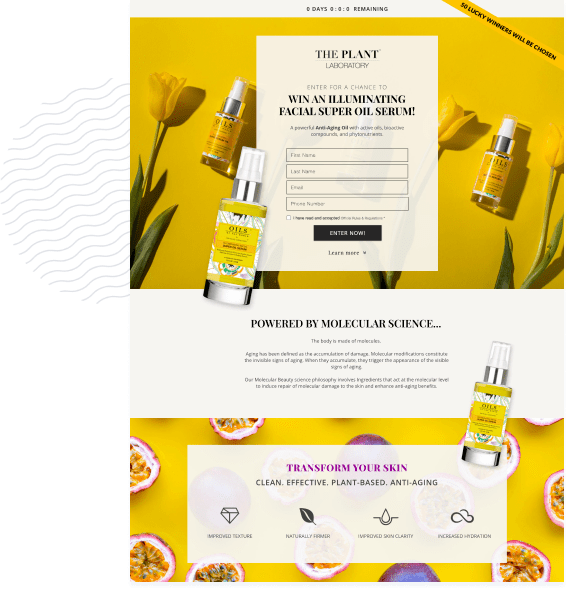
21. Incorporate Social Proof Into Your Design
One of the most important tips to help you improve your user experience is to incorporate social proof into your design. Social proof plays a vital role in digital marketing, and you need to think about it when creating your website design.
This is necessary for building trust and credibility and attracting your visitors’ attention. Any web designer should always try to find ways to incorporate this into their website design. This could be through reviews, trust badges, testimonials, user videos, and more.

Conclusion
There’s a lot that goes into website design. The design needs to be a careful process, and you need to make sure to think about many different elements when putting your website together. Following the tips above will make a big difference to your site.
If all these ideas sound amazing but your head is spinning and you don’t know where to start, consider hiring professional web designers to help you get started.
Wishpond offers the easiest unlimited graphic design services to help small businesses. With Wishpond, you can access a team of dedicated graphic designers for a single monthly fee. Get unlimited design projects done whenever you want them. This is the best way for small businesses to optimize their design efforts.
Get in touch today if you want to see how Wishpond can help you achieve the perfect website design.
Related Content
- 8 Types of Graphic Design All Businesses Need
- How to Work With a Graphic Designer – 8 Strategies for Better Designs
- 13 Best Graphic Design Tools to improve Your Visual Appeal
- How to Outsource Graphic Design Work That WOWs Your Customers
- How to Create Beautiful Gated ContentWithout Graphic Design Experience
- Designing for Marketers: Crash Course on Typography
- How Canva Became a $40 Billion Business

